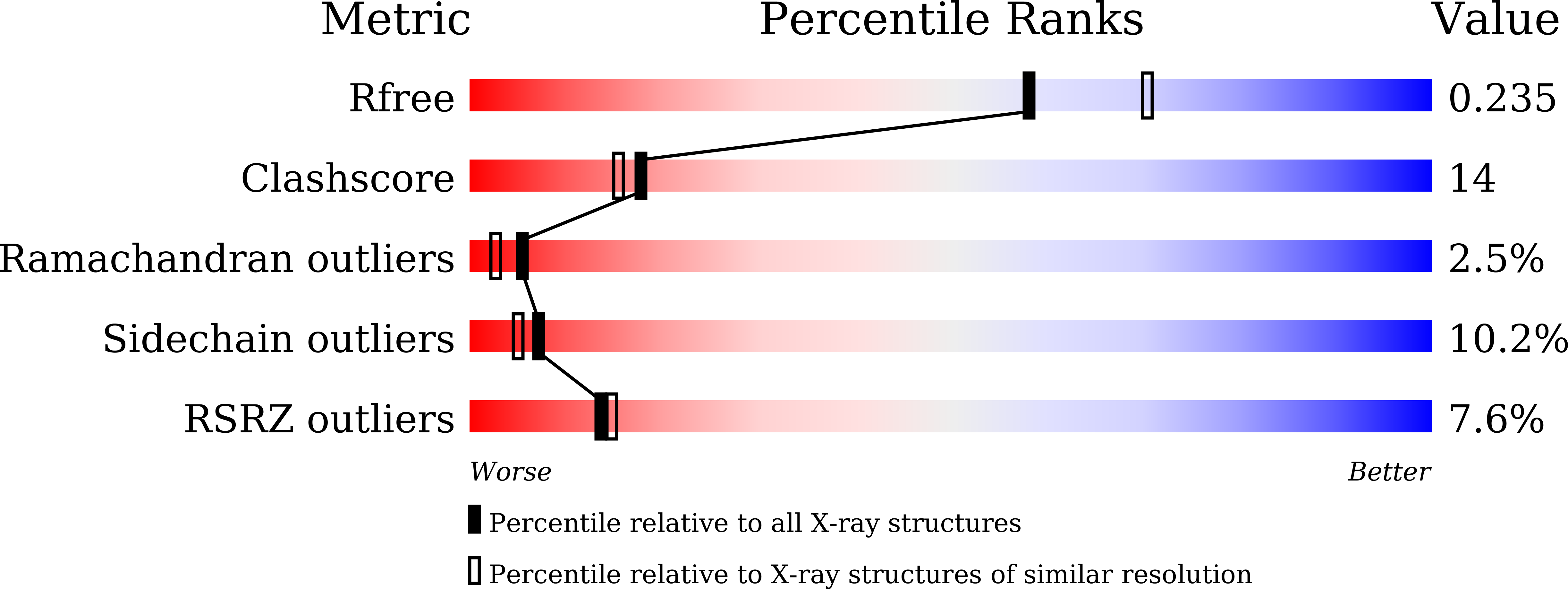Alteration of molecular assembly of peroxiredoxins from hyperthermophilic archaea
Nakamura, T., Oshima, M., Yasuda, M., Shimamura, A., Morita, J., Uegaki, K.(2017) J Biochem 162: 415-422
- PubMed: 28992240
- DOI: https://doi.org/10.1093/jb/mvx045
- Primary Citation of Related Structures:
5XBQ, 5XBR, 5XBS - PubMed Abstract:
Peroxiredoxin from Pyrococcus horikoshii (PhPrx) is a decameric protein formed by ring-type assembly of five dimers. To engineer the quaternary structure of PhPrx, we created a mutant PhPrx (PhPrx6m) by introducing six point mutations designed to dissociate PhPrx into dimers. Although PhPrx6m was a dimer in solution, the six dimers assembled into a dodecamer following crystallization. In the crystal structure, PhPrx6m was overoxidized, and the peroxidatic cysteine was in sulfonic acid form and two cysteines in the C-terminal region were linked by an intramolecular disulfide bond. Thus, we characterized the wild-type PhPrx overoxidized by hydrogen peroxide (PhPrxPer). Analytical ultracentrifugation showed that PhPrxPer had a higher molecular mass in solution than PhPrx. This was confirmed by analysis of the crystal structure of PhPrxPer, which was found to form a ring-type dodecamer composed of six dimers. The monomeric structures of PhPrx6m and PhPrxPer differed from that of PhPrx in the relative orientation of two domains, reflecting the number of dimers in the ring-type assembly. Unlike PhPrx, homologous peroxiredoxin from Aeropyrum pernix (ApPrx) did not undergo hexameric association. This property can be explained by the stronger connection between the two domains in ApPrx due to its C-terminal extension relative to PhPrx.
Organizational Affiliation:
National Institute of Advanced Industrial Science and Technology, Ikeda, Osaka 563-8577, Japan.















